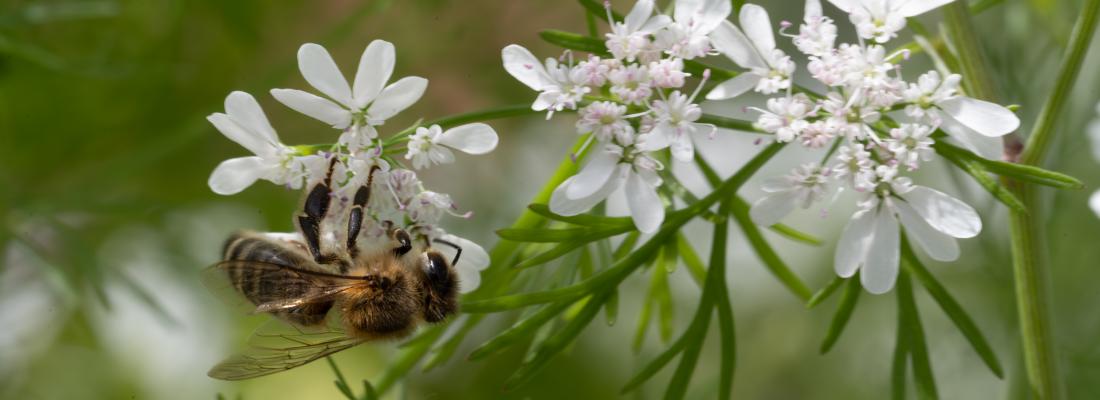Biodiversity Reading time 3 min
How AI can help identify bees exposed to pesticides
Published on 11 July 2024

Honey bees, as major pollinators of crops and wild plants, are frequently exposed to multiple chemical pesticides in the environment. This regular exposure affects their behaviour and their health 1, leading to the potential loss of honey bee colonies. One current research challenge is to arrive at an efficient and accurate assessment of the impacts of pesticides on these bees.
To achieve this, high-tech systems are now being deployed by scientists to monitor the activity of foraging honey bees. Placed at the entrance of the hive, detectors enable the detailed measurement of flight-related traits in bees that have been individually tagged by researchers using RFID (radio frequency identification) or QR codes attached to the thorax.
Previous studies have demonstrated that multiple neurotoxic pesticides at sublethal doses (which do not kill the bee), reduce the daily flight activity of honey bees by around 25%. These findings allowed the authors of the present study to select flight reduction as an indicator of the presence of neurotoxic pesticides in the environment.
99% classification accuracy
INRAE’s research team and their colleagues from the National Autonomous University of Mexico have achieved a first, by collecting honey bee flight activity data and processing it using AI modelling. Their results made it possible to classify bee flight performance and thereby determine, as a function of the number of flights and time spent foraging outside the hive, whether the bees had been exposed or not to chemical pesticides.
For the study, a dataset of 42,092 flight records from 1107 control and 1689 exposed bees was analysed by the research team. The model achieved 99% classification accuracy when it was trained on 25 days of activity data.
The near-perfect accuracy of the results underscores the highly predictive performance of AI models for toxicovigilance. This new technology, which must next undergo field tests, has the potential to provide real-time data for the assessment of risks linked to pesticides in honey bees.
Olivares-Pinto U., Alaux C. et al. (2024). Using honey bee flight activity data and a deep learning model as a toxicovigilance tool. Ecological Informatics, DOI: https://doi.org/10.1016/j.ecoinf.2024.102653
